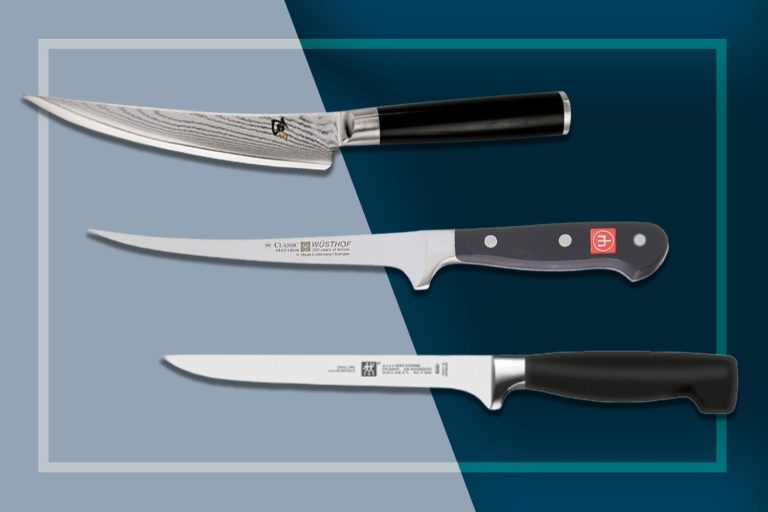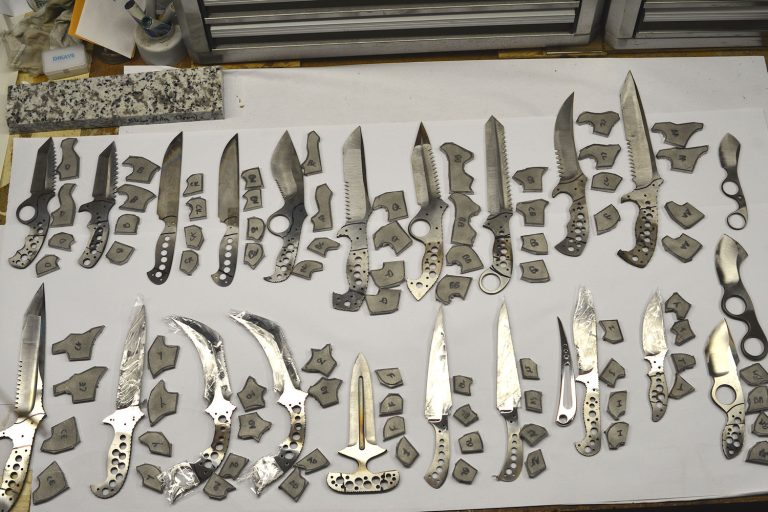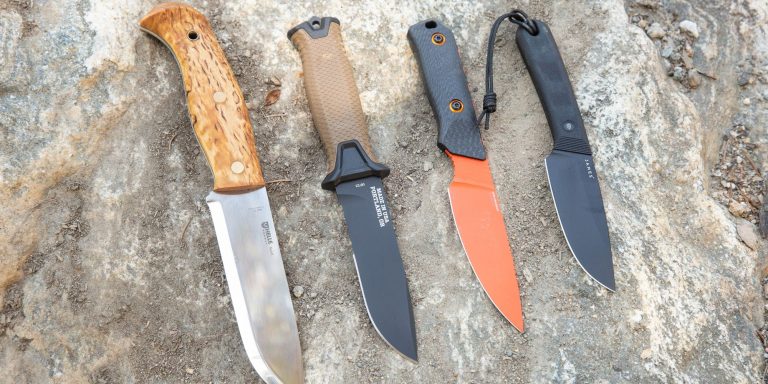Blade Length Matters: Finding the Ideal Size for You
Choosing the right blade length is crucial for a perfect fit, and it depends on your individual needs and preferences. A brief introduction to the topic of finding the ideal blade length can help provide insights into why this decision matters.
Blade length plays a significant role in various aspects of knife usage, including slicing, chopping, and other cutting tasks. The appropriate blade length can enhance efficiency, ease of use, and overall performance. Considering factors such as the intended purpose, cutting technique, personal comfort, and legal regulations can assist in determining the ideal blade length for each individual.
By understanding the importance of blade length and considering these factors, one can find the perfect knife size to suit their needs.
The Importance Of Blade Length
Blade length plays a crucial role in determining the overall performance of a knife. Understanding its importance is essential to find the ideal size for you. The impact of blade length on performance cannot be overlooked. It directly affects the cutting power and control of the knife.
When choosing the right blade length, certain factors should be considered. First and foremost, consider the intended use of the knife. A longer blade is typically more suitable for tasks that require slicing and chopping, while a shorter blade is ideal for intricate tasks and precision work.
Additionally, the size of your hand and your level of comfort should also be taken into account. A blade that is too long or too short may be difficult to handle and may compromise your grip. It’s important to find a balance that allows for optimal control and maneuverability.
| Factors to Consider |
|---|
| Intended Use of the Knife |
| Size of Your Hand |
| Level of Comfort |
By carefully considering these factors, you can find the ideal blade length that suits your needs and enhances your performance in various tasks.

Credit: www.energy.gov
Types Of Blade Lengths
table { width:100%; border-collapse: collapse; }table, th, td { border: 1px solid black; padding: 8px; font-weight: normal; text-align: left; }Blade Length Matters: Finding the Ideal Size for You
When choosing a blade length, it’s important to consider the specific tasks and requirements you have. Blade lengths vary and can be categorized into three main types:
| Short blade lengths for precision tasks | Medium blade lengths for versatility | Long blade lengths for heavy-duty tasks |
|---|---|---|
| Short blade lengths are ideal for precise and detailed work where accuracy is key. These blades offer excellent control and maneuverability, making them suitable for tasks such as carving intricate designs, trimming small branches, or working on delicate projects. | Medium blade lengths provide a balance between precision and versatility. They are suitable for a wide range of tasks, including general cutting, pruning, and woodworking. These blades offer a good compromise between control and efficiency, making them a popular choice for many users. | Long blade lengths are designed for heavy-duty tasks and cutting through thick materials. These blades offer increased power and reach, making them ideal for tasks like chopping down trees, sawing large logs, or working on construction projects that require extended cutting strokes. |
Finding Your Ideal Blade Length
Blade length is a crucial factor in finding the ideal knife for your needs. So how do you go about determining your perfect blade length?
First, assess your cutting needs and preferences. Consider what tasks you will primarily use the knife for. Will it be mostly for slicing vegetables or for heavy-duty tasks like butchering meats? This will help you determine the length that suits your intended use.
Next, try out different blade lengths to find the most comfortable option. Holding and using the knife will give you a better understanding of how it feels and performs in your hand. Remember, comfort is key to ensure efficiency and safety.
By assessing your cutting needs and preferences and trying out different blade lengths, you can find the ideal size that is comfortable and efficient for your specific requirements.
The Pros And Cons Of Short Blade Lengths
Short blade lengths have their pros and cons. On the positive side, they offer increased maneuverability, making them ideal for intricate cutting tasks. The smaller size allows for precise movements and greater control. However, when it comes to larger tasks that require more cutting power or a longer reach, short blade lengths may fall short. They might not have the strength or the length to tackle such tasks effectively. While short blades are great for certain applications, it’s important to recognize their limitations in order to make an informed decision about the ideal blade length for your needs.
The Pros And Cons Of Medium Blade Lengths
Blade length plays a crucial role in determining the ideal knife size for you. Medium blade lengths have their own set of advantages and disadvantages. Finding the balance between versatility and cutting power is essential when considering medium-sized blade lengths.
Pros of Medium Blade Lengths:
- Adequate reach for most everyday tasks
- Offers a good balance between maneuverability and cutting power
- Easier to control and handle compared to longer blade lengths
Cons of Medium Blade Lengths:
- May not be suitable for tasks that require longer reach or maximum cutting power
- Less effective for chopping larger, bulkier items
When selecting the ideal knife size, it is important to consider your specific needs and preferences. Take into account the tasks you frequently perform and ensure that the blade length aligns with your requirements. Whether it’s for everyday use or specialized tasks, finding the right balance is essential to make the most of your knife.
The Pros And Cons Of Long Blade Lengths
Blade length plays a crucial role in finding the ideal size for your needs. Long blade lengths offer extended reach, making them useful for larger tasks that require reaching and cutting. However, there are trade-offs to consider. One drawback is reduced maneuverability and control for precision cutting. When using a longer blade, it can be more challenging to achieve precise, intricate cuts due to the increased length and weight. This can hinder your ability to perform delicate or detailed work.
Factors To Consider When Choosing Blade Length
When choosing a blade length, there are several factors to consider. Firstly, it is important to think about task-specific requirements and limitations. Different tasks may require different blade lengths in order to perform effectively and efficiently. For example, a smaller blade length may be more suitable for precise and intricate tasks, whereas a longer blade may be better for larger cutting jobs.
Personal comfort and grip preferences also play a role in determining the ideal blade length. Some individuals may find it easier to handle a shorter blade, while others may prefer the added reach and control provided by a longer blade.
Safety considerations and user skill level are additional factors to bear in mind. It is important to choose a blade length that matches your skill level and experience. Beginners may find it safer to start with a shorter blade length until they gain more proficiency and confidence.
Tips For Proper Blade Length Selection
| Tips for Proper Blade Length Selection |
| When determining the ideal blade length for your needs, it is crucial to seek advice from experienced users or experts. Their insights and expertise can provide valuable guidance in your decision-making process. Additionally, conducting research and reading reviews on different blade lengths can give you a better understanding of the pros and cons associated with each option. |
| Moreover, testing different blade lengths before settling on a final choice is highly recommended. By physically handling knives with various blade lengths, you can assess their feel, control, and comfort. This will enable you to make an informed decision that aligns with your preferences and intended usage. |
Conclusion
Choosing the right blade length is crucial when it comes to finding the ideal size for you. The length of the blade determines the functionality, efficiency, and safety of the tool. Whether you are a professional chef, a DIY enthusiast, or an outdoor adventurer, understanding your specific needs and considering factors such as the task at hand, your skill level, and the material you will be working with, will help you determine the perfect blade length.
Remember to consider your comfort and balance when using the tool, as this will directly impact your performance and overall experience. Take the time to research and test out different blade lengths to find the one that suits you best.
With the right blade length, you can become more efficient, precise, and confident in your work. Happy cutting!






